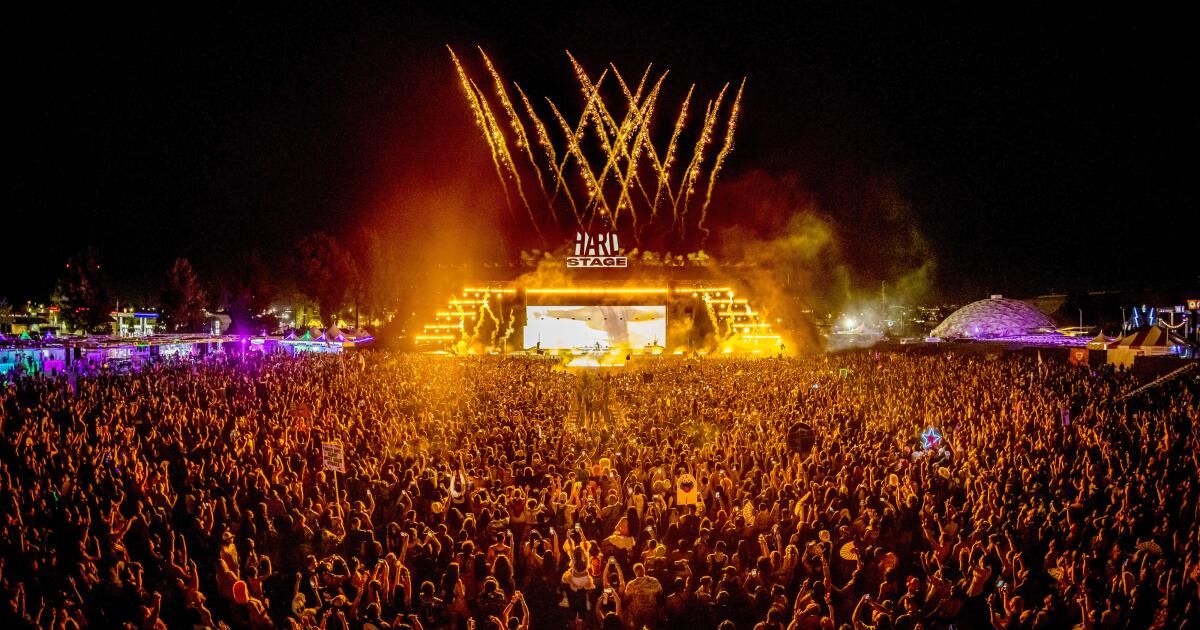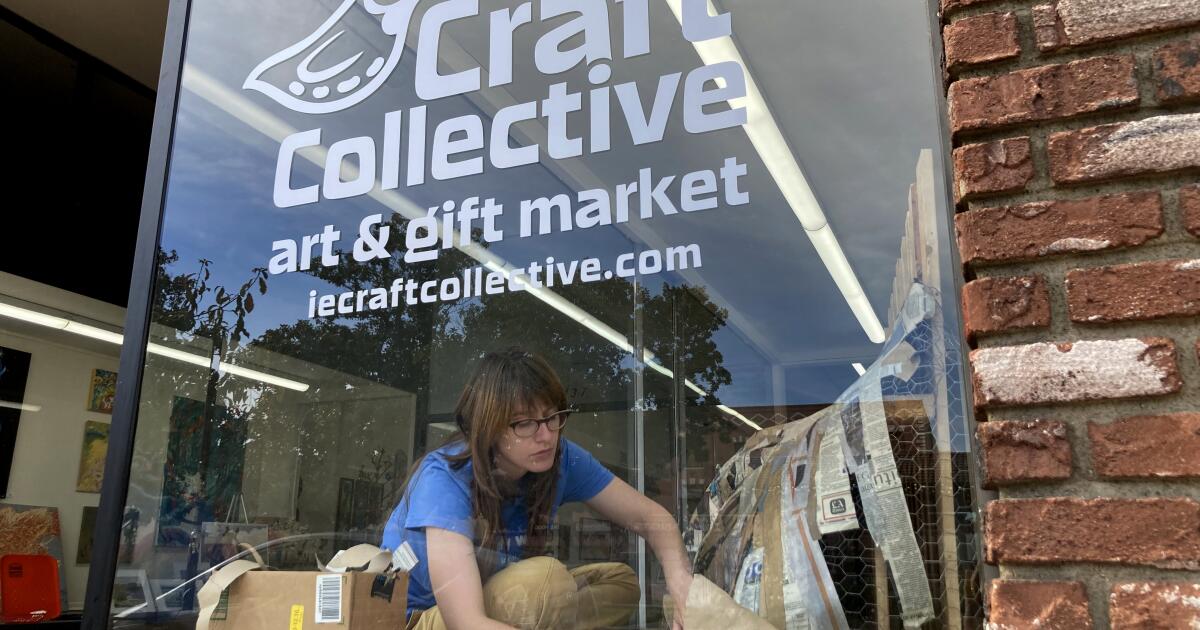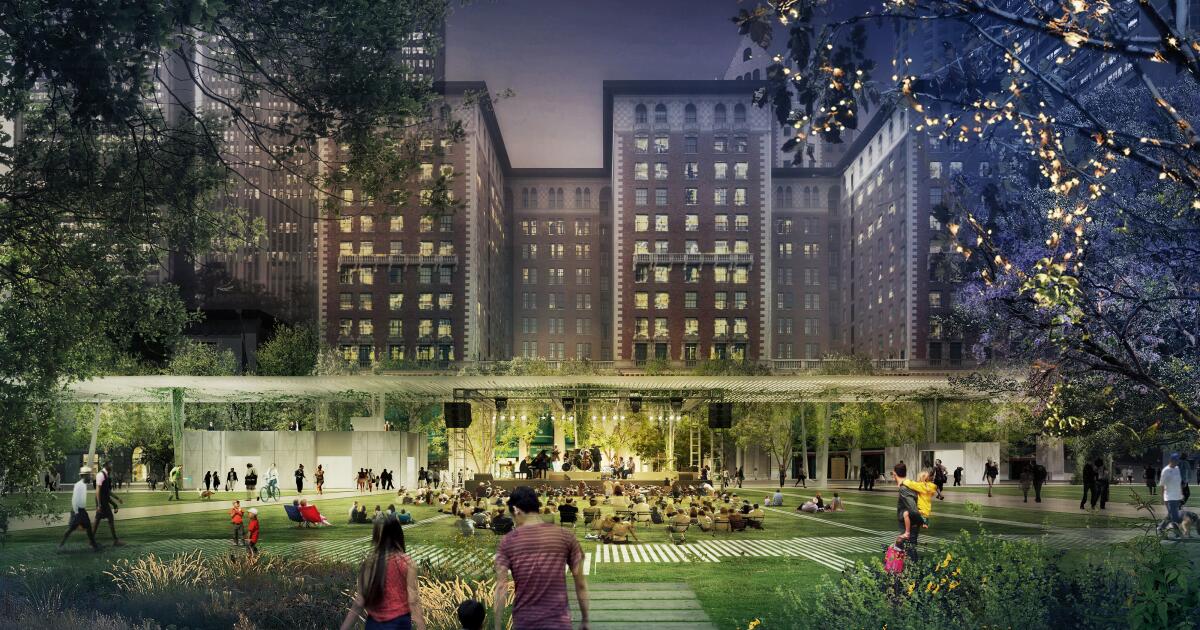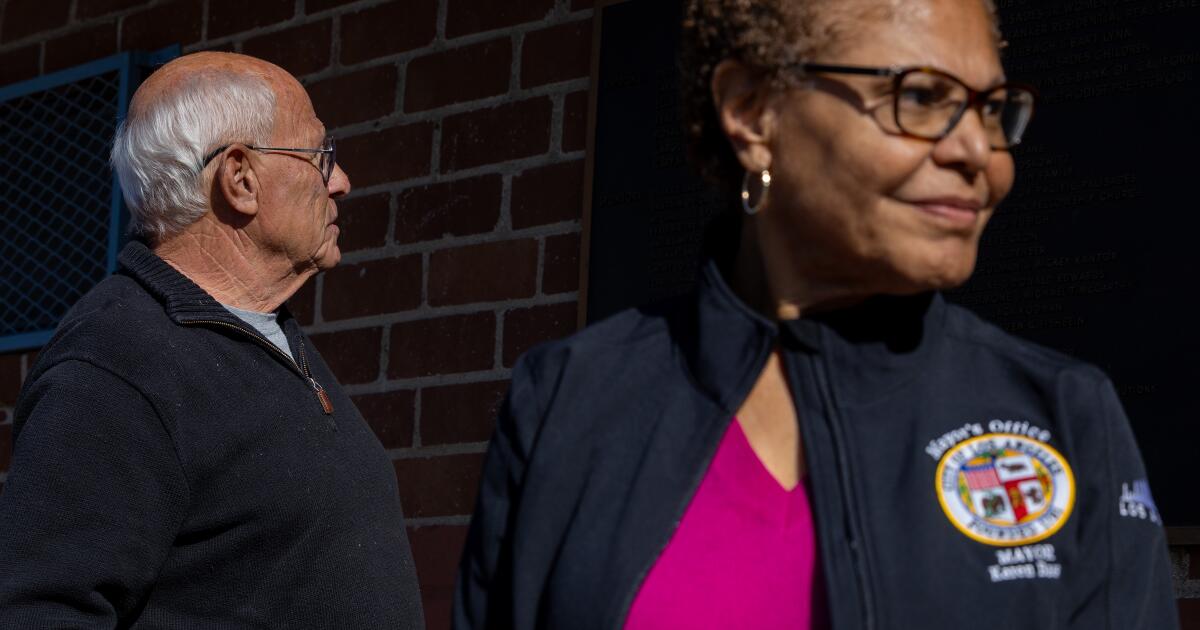Chris Bankoff said that living in Westchester, he's used to two kinds of noise: the occasional party by students at Loyola Marymount University and the roar of jet engines taking off from LAX.
What I didn't expect to hear on Aug. 2 was the low-frequency, booming sound of music from HARD Summer, a house and techno music festival held at Hollywood Park in Inglewood, about five miles from Bankoff's home.
When he first heard the banging that Friday, he thought it was a nearby party and thought nothing of it. But the next afternoon, Bankoff said, the sound resumed and was even louder than the day before.
“I could hear the change in pace,” he said. “It was like someone had parked in front of the house and was blasting music in their car.”
In North Redondo Beach, about 9 miles from the entertainment venue, Sondra Segall thought she heard construction work. The noise didn't bother her, but she wondered how she could hear it.
Residents in Manhattan Beach, El Segundo and Hermosa Beach also flocked to the Nextdoor app and Reddit to ask or complain about noise. The El Segundo Police Department received more than 100 calls on Friday and 200 on Saturday; the number dropped to 50 calls on Sunday, possibly in response to community alerts and social media posts.
Neither the festival organizer, Insomniac Events, nor Hollywood Park responded to requests for comment before publication.
While Inglewood’s noise ordinance sets limits on concert volume, it says those limits don’t apply to events at Hollywood Park that end at midnight. So the HARD Summer performers, who finished their sets around 11 p.m., likely performed at a volume equal to or greater than that on the airport runways.
HARD Summer organizers told KABC-TV in a statement: “While we always operate within legally acceptable decibel levels, we do have sound monitors deployed on the field to monitor and respond to all noise complaints.”
The energy of sound waves decreases the farther they travel from the source. So even if the music had been amplified to the pain threshold, the volume would still have to fall below that of a whispered conversation a few miles from the concert.
So what happened?
El Segundo City Manager Darrell George said in a statement that he reached out to Inglewood City Manager Mark Weinberg, who said event organizers made mistakes when setting up performance spaces that exacerbated the “bass reverberation.”
Inglewood Mayor James T. Butts Jr. issued a statement nearly a week after the first complaints, saying the sound and vibration issues experienced were “related to certain low frequencies” that can be affected by “stage position, reflection off buildings, and atmospheric conditions, including wind.” Butts added that putting a stage on the elevated American Airlines Plaza “was a major contributing factor to the problem” and said the area will be off-limits to concerts going forward.
Judging from anecdotes shared by residents, increased bass reverberation is not what people in the South Bay were hearing, said Vincent Olivieri, a professor of sound and design at UC Irvine.
“Reverberation refers to the millions of reflections that occur on different surfaces and that give spaces their particular sound,” Olivieri explained. It’s the reason why a cave, with hard stone walls that cause lots of acoustic reflections, sounds like a cave and not a living room, he said.
“The reverberation explanation also doesn’t explain why it seems like only people southwest of the site heard it,” he said.
If the Inglewood explanation doesn't hold up, how could residents 9 miles southwest of the site have heard HARD Summer's low-frequency vibrations? Audio engineering and acoustics experts theorize about how the sound could have traveled so far.
How sound could have traveled
The festival's musical performances took place on five stages set up in the parking lots surrounding SoFi Stadium. With this type of outdoor show, there are no walls to interrupt the flow of sound to the outside, said Tony Hoover, principal of McKay Conant Hoover, acoustical and audiovisual consultants.
And unlike indoor entertainment venues, there is no ceiling to contain the sound, he said.
Deep bass is an important part of hip-hop, techno and electronic music, said Barry Rudolph, president of the Los Angeles chapter of the Audio Engineering Society. He said he's confident the festival used powerful amplifiers and huge speakers to reproduce the sound in its entirety and at high volume.
“Strong, prolonged sound waves can vibrate surrounding local structures and cause them to resonate with this additional sound energy,” adding to the problem of sound leakage from the venues into the community, he said.
It's like hearing a car coming down the street with a stereo that vibrates the windows: You hear the music before the car even shows up, Rudolph said.
Still, Rudolph doubted that HARD Summer's low frequencies could travel as far as nine miles. More believable, he said, is that the booming bass traveled about a mile from Hollywood Park in all directions (unlike higher frequencies, he said, low frequencies are omnidirectional).
And yet, there is no shortage of people far from Hollywood Park who say they heard the festival's thumping beat on Friday and Saturday.
Hoover said it's not unusual for that sound to travel several miles, but he was surprised to learn that people 9 miles away heard the bang.
He described the sound emanating from Hollywood Park as “kind of like a huge bubble of sound that just keeps getting bigger and bigger.” But as the sound bubble expands, it gets weaker, so the volume decreases the further away you get from the source of the sound.
However, the bubble can change shape due to wind and temperature, both on the ground and in the layers of air above it.
Temperature comes into play especially on a warm or hot day, Hoover said.
After sunset, the air at ground level will cool, but air at higher altitudes will generally remain much warmer (a “temperature inversion”). These different temperature bands can cause sound waves to bend, or refract, downward toward the ground because of the difference in the speed at which sound waves travel in warm and cold air, said Jason Corey, an associate professor of music at the University of Michigan.
Continuing to explain temperature inversion, Olivieri said that sound waves or sonic energy can be influenced by microclimates.
Think of a heat dome, but on a smaller scale. Under the right conditions, a collection of warm air can sometimes serve as a raised mirror that holds sonic energy back down. This is especially likely to happen during summer festivals.
As sonic energy leaves an outdoor concert venue, some of it travels into the atmosphere. In this case, sonic energy leaving HARD Summer toward the southwest could have hit a pocket of warm air that was halfway between the venue and the affected neighborhoods, Olivieri said.
“That hot air pocket can serve as a kind of acoustic mirror and refract [the sonic energy] “Back to the affected neighborhoods,” he said.
Corey agreed, saying that during a temperature inversion, “the sound from a concert venue travels into the warmer layer of air and curves downward after passing over buildings and other obstacles and reaches the ground miles away from the concert.”
Hoover was skeptical, saying wind and other factors would have to match up exactly to create the temperature inversion effect, especially at such long distances. But Olivieri said that if the bass signal was stronger than it should have been, and if the sound was bouncing off a high-temperature microclimate system into neighborhoods in the southwest, that could help explain why those neighborhoods heard the pulsating bass while others didn't.
Long-distance noise from a concert isn't a new phenomenon, it's just something that's becoming more common because of improvements in concert sound technology, said Dave Revel, president of Technical Multimedia Design, a consulting firm that often helps venues with noise mitigation.
He added: “It is a logical progression of technology, but it has created challenges in terms of community noise because there are now very large and powerful sound systems that can reproduce a wide range of frequencies.”
When it worked at events at the Rose Bowl and the Fairplex, Revel said, Technical Multimedia Design found that people up to 4 miles away could detect the music, especially the bass.
The role of noise ordinances
Another potential factor in this incident is Inglewood's noise ordinance.
Loudness is measured in decibels, or units of sound pressure. But there are different standards for measuring decibels when regulating noise: one focuses on the frequency range of human speech, and another focuses more on a full range of frequencies, including low frequencies.
Generations of community noise ordinances are based on the old standard, which focuses on frequencies common to human speech, Revel said. “They never anticipated that music [would have] “under it.”
The Inglewood city ordinance falls into that category. The problem, Revel said, is that it relies on a standard that “doesn’t account for all frequencies, and it certainly doesn’t account for lower frequencies that travel farther.”
Concerts and festivals can operate well within the law because “the law essentially ignores the bass.”
In 2015, Revel's company was hired by Fairplex in Pomona to help with noise mitigation at the HARD summer festival held there in July, after receiving complaints of “unbearable noise levels” months earlier, the Daily Bulletin reported.
Revel said he remembers measuring the sound during the event.
“We were actually within the community noise limit for the entire concert, but people’s windows were shaking,” he said. “People who lived right next to the concert had their windows shaking because the bass was so insane.”












